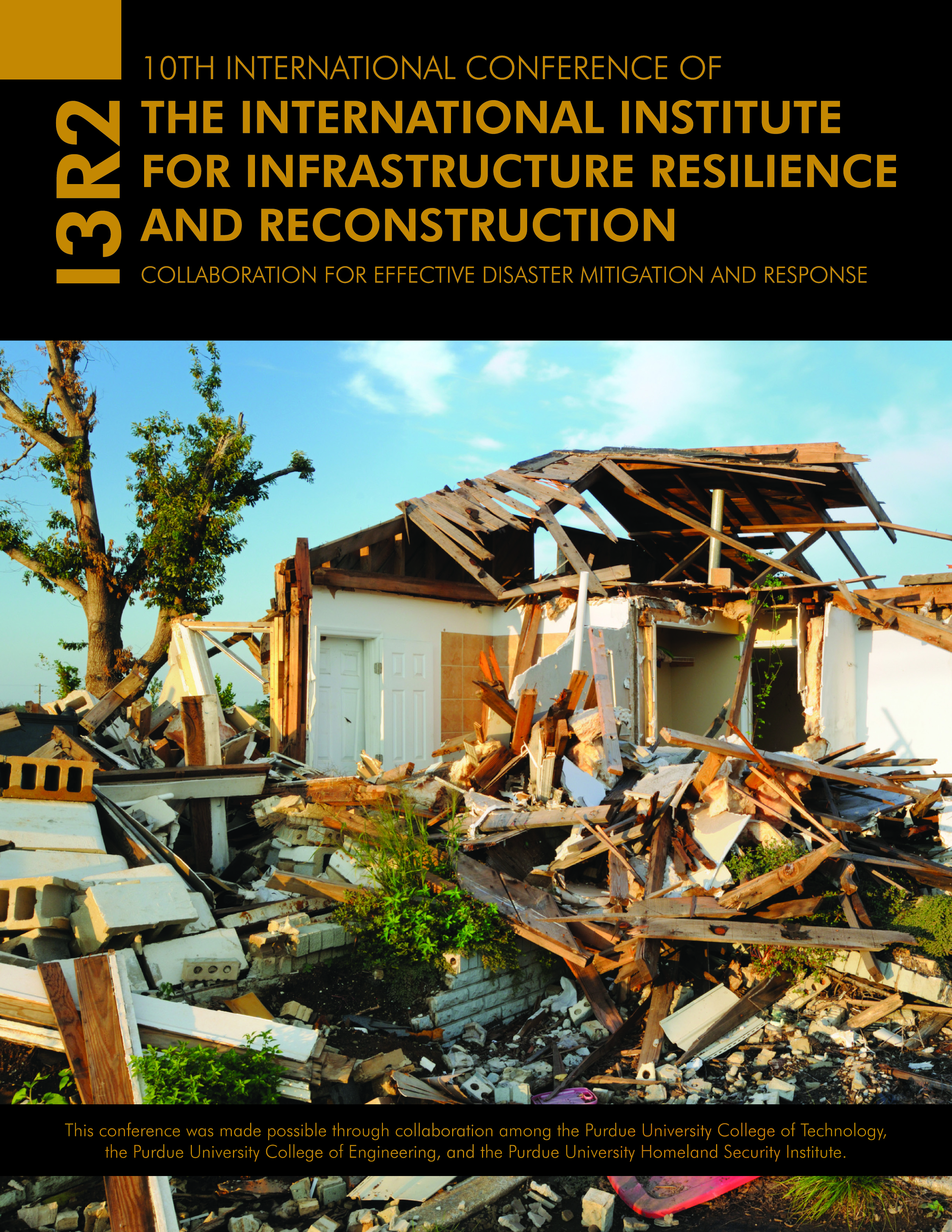Abstract
The overall debris removal after disasters is often prolonged due to the huge amount of debris and lack of capacities such as a Temporary Debris Management Site (TDMS) in the community. This results in a delay of overall recovery and increases the total recovery cost. Strategic planning and building a TDMS will help in providing extra time for proper disposal of debris and clearing a disaster-impacted site that will facilitate the reconstruction process. This paper presents a unique approach for identifying and selecting TDMS locations for expediting debris removal from the community. A hypothetical example of a community impacted by a natural hazard is presented to explain how the the proposed model works. The research integrates data from a loss assessment report obtained from HAZUS-MH, Post Disaster Needs Assessment (PDNA), and Geographical Information System (GIS) in a dynamic simulation model. Various TDMS locations could be evaluated based on the existing capacity and infrastructure services and considering factors such as overall debris removal time, associated cost, productivity, and availability of resources. Debris management teams would greatly benefit from the research for strategically siting TDMS for accelerating the debris removal process.
Keywords
debris, disaster, temporary debris management site, disaster waste
DOI
10.5703/1288284315362
Recommended Citation
Kim, J., Deshmukh, A., & Hastak, M. (2014). Selecting a Temporary Debris Management Site for Effective Debris Removal. In Randy R. Rapp & William Harland (Eds.), The Proceedings of the 10th International Conference of the International Institute for Infrastructure Resilience and Reconstruction (I3R2) 20-22 May 2014. (214-218). West Lafayette, Indiana: Purdue University.
Included in
Selecting a Temporary Debris Management Site for Effective Debris Removal
The overall debris removal after disasters is often prolonged due to the huge amount of debris and lack of capacities such as a Temporary Debris Management Site (TDMS) in the community. This results in a delay of overall recovery and increases the total recovery cost. Strategic planning and building a TDMS will help in providing extra time for proper disposal of debris and clearing a disaster-impacted site that will facilitate the reconstruction process. This paper presents a unique approach for identifying and selecting TDMS locations for expediting debris removal from the community. A hypothetical example of a community impacted by a natural hazard is presented to explain how the the proposed model works. The research integrates data from a loss assessment report obtained from HAZUS-MH, Post Disaster Needs Assessment (PDNA), and Geographical Information System (GIS) in a dynamic simulation model. Various TDMS locations could be evaluated based on the existing capacity and infrastructure services and considering factors such as overall debris removal time, associated cost, productivity, and availability of resources. Debris management teams would greatly benefit from the research for strategically siting TDMS for accelerating the debris removal process.



